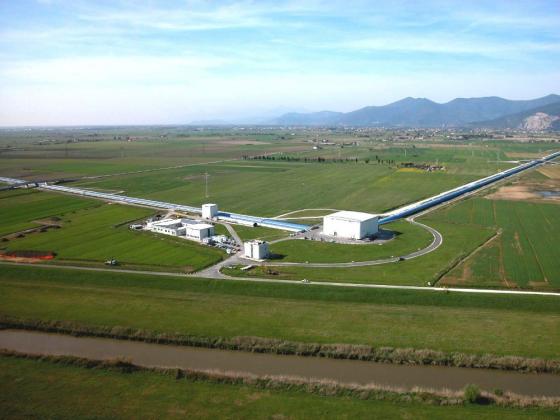In order to better understand the Universe and its evolution, it is necessary to interpret all the messages that come from distant space. Einstein's theory of general relativity predicts the existence of gravitational waves, similar to ripples on the surface of a pond after a stone has been thrown, which spread through space at the speed of light. The observation of gravitational waves will provide significant and complementary information to the observation of electromagnetic waves (light, radio waves, X-rays and gamma rays) and elementary particles (cosmic rays, neutrinos) of astrophysical origin.
Virgo is a Michelson-type laser interferometer with two 3 km arms arranged at right angles, located near Cascina (Pisa). The passage of the gravitational wave causes a very small variation in the length of the interferometer's arms which produces a very small phase shift between the beams of light travelling inside the instrument, proportional to the amplitude of the gravitational wave.

The Genoa Group has a leadership role in the project and is currently engaged in the upgrade of various detector subsystems, which will be completed at the end of 2015 and will enter data collection in 2016.
The Virgo experiment is co-financed in Italy by the National Institute of Nuclear Physics (INFN) and the European Gravitational Observatory (EGO).




